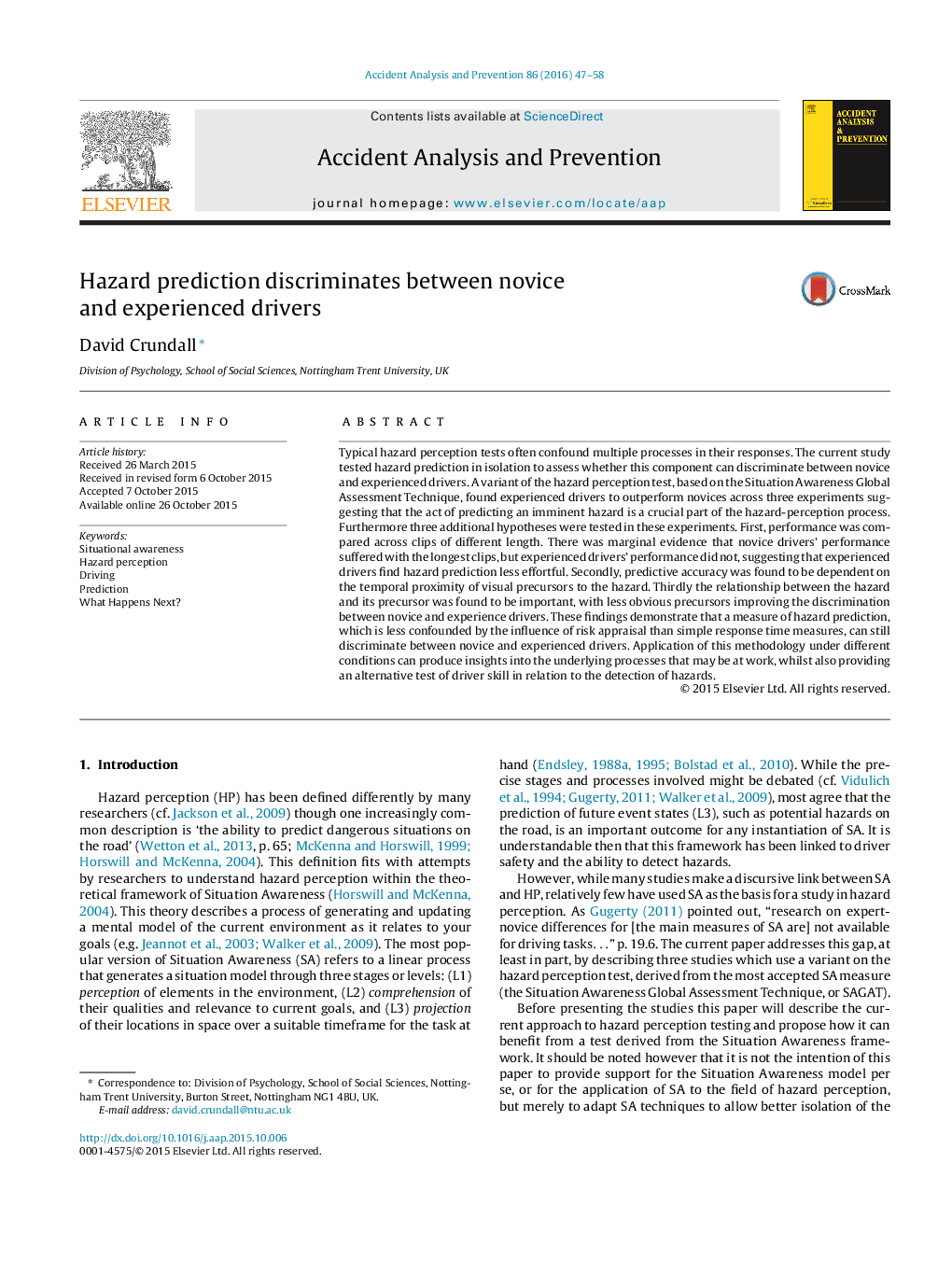| Article ID | Journal | Published Year | Pages | File Type |
|---|---|---|---|---|
| 6965398 | Accident Analysis & Prevention | 2016 | 12 Pages |
Abstract
Typical hazard perception tests often confound multiple processes in their responses. The current study tested hazard prediction in isolation to assess whether this component can discriminate between novice and experienced drivers. A variant of the hazard perception test, based on the Situation Awareness Global Assessment Technique, found experienced drivers to outperform novices across three experiments suggesting that the act of predicting an imminent hazard is a crucial part of the hazard-perception process. Furthermore three additional hypotheses were tested in these experiments. First, performance was compared across clips of different length. There was marginal evidence that novice drivers' performance suffered with the longest clips, but experienced drivers' performance did not, suggesting that experienced drivers find hazard prediction less effortful. Secondly, predictive accuracy was found to be dependent on the temporal proximity of visual precursors to the hazard. Thirdly the relationship between the hazard and its precursor was found to be important, with less obvious precursors improving the discrimination between novice and experience drivers. These findings demonstrate that a measure of hazard prediction, which is less confounded by the influence of risk appraisal than simple response time measures, can still discriminate between novice and experienced drivers. Application of this methodology under different conditions can produce insights into the underlying processes that may be at work, whilst also providing an alternative test of driver skill in relation to the detection of hazards.
Related Topics
Physical Sciences and Engineering
Chemical Engineering
Chemical Health and Safety
Authors
David Crundall,
